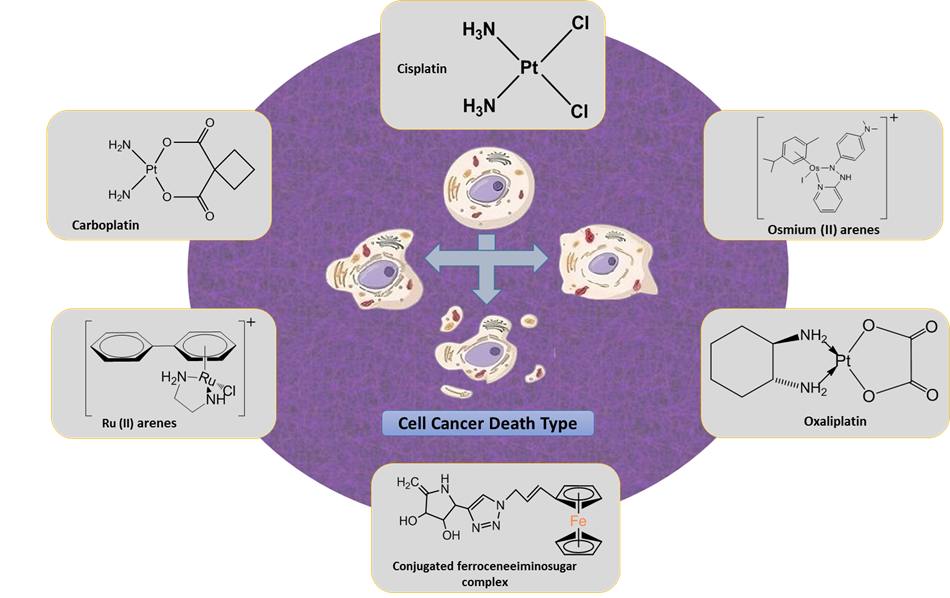Potential of Organometallic Complex Compounds as Anticancer Drugs: A Review
DOI:
https://doi.org/10.22437/chp.v8i1.31409Kata Kunci:
Anticancer drugs, Organometallic compounds, Reaction mechanismAbstrak
Cancer is one of the deadliest diseases in the world. Currently, there are various types of anticancer drugs that are used to treat cancer, but they still have various side effects that can interfere with the quality of life of patients. Organometallic complexes (OCOs) are chemical compounds consisting of metal atoms bonded to carbon atoms. OCOs have various potential to be used as anticancer drugs, including their ability to specifically target cancer cells, inhibit cancer cell growth, and reduce the side effects of other anticancer drugs. The mechanism of action of OCOs involves interactions with nucleophilic molecules within the cell, including DNA, RNA, and proteins, as well as the formation of additional platinum products. In this review, we will discuss organometallic compounds that can function as anticancer drugs, such as platinum, ruthenium, iron, carboplatin, and oxaliplatin, which have been shown to be effective in fighting cancer. We will also discuss the mechanism of action of these compounds in cancer cells and the types of cancer cells that can be treated with organometallic compounds
Unduhan





